Refine search
Actions for selected content:
23990 results in Ancient history
Index
-
- Book:
- Cults and Rites in Ancient Greece
- Published online:
- 05 February 2015
- Print publication:
- 16 October 2014, pp 354-362
-
- Chapter
- Export citation
10 - Sacrifice and Animal Husbandry in Ancient Greece
- from Part III - Religion and Society
-
- Book:
- Cults and Rites in Ancient Greece
- Published online:
- 05 February 2015
- Print publication:
- 16 October 2014, pp 198-231
-
- Chapter
- Export citation
Preface
-
-
- Book:
- Cults and Rites in Ancient Greece
- Published online:
- 05 February 2015
- Print publication:
- 16 October 2014, pp xv-xvii
-
- Chapter
- Export citation
General Introduction
-
-
- Book:
- Cults and Rites in Ancient Greece
- Published online:
- 05 February 2015
- Print publication:
- 16 October 2014, pp xxiii-xxxi
-
- Chapter
- Export citation
3 - Apollo Lykeios in Athens
- from Part I - Gods and Heroes
-
- Book:
- Cults and Rites in Ancient Greece
- Published online:
- 05 February 2015
- Print publication:
- 16 October 2014, pp 41-61
-
- Chapter
- Export citation
12 - The Spectacular and the Obscure in Athenian Religion
- from Part III - Religion and Society
-
- Book:
- Cults and Rites in Ancient Greece
- Published online:
- 05 February 2015
- Print publication:
- 16 October 2014, pp 270-290
-
- Chapter
- Export citation
Introduction
- from Part III - Religion and Society
-
-
- Book:
- Cults and Rites in Ancient Greece
- Published online:
- 05 February 2015
- Print publication:
- 16 October 2014, pp 179-185
-
- Chapter
- Export citation
Abbreviations
-
- Book:
- Cults and Rites in Ancient Greece
- Published online:
- 05 February 2015
- Print publication:
- 16 October 2014, pp xix-xxii
-
- Chapter
- Export citation
8 - Theoxenia
- from Part II - Rites
-
- Book:
- Cults and Rites in Ancient Greece
- Published online:
- 05 February 2015
- Print publication:
- 16 October 2014, pp 145-176
-
- Chapter
- Export citation
Acknowledgments
-
-
- Book:
- Cults and Rites in Ancient Greece
- Published online:
- 05 February 2015
- Print publication:
- 16 October 2014, pp xviii-xviii
-
- Chapter
- Export citation

Historical Agency and the ‘Great Man' in Classical Greece
-
- Published online:
- 05 October 2014
- Print publication:
- 02 October 2014
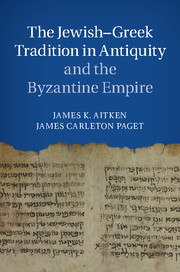
The Jewish-Greek Tradition in Antiquity and the Byzantine Empire
-
- Published online:
- 05 October 2014
- Print publication:
- 20 October 2014
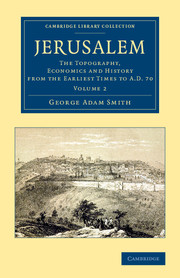
Jerusalem
- The Topography, Economics and History from the Earliest Times to AD 70
-
- Published online:
- 05 October 2014
- Print publication:
- 31 October 2013
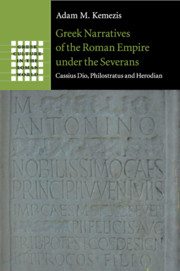
Greek Narratives of the Roman Empire under the Severans
- Cassius Dio, Philostratus and Herodian
-
- Published online:
- 05 October 2014
- Print publication:
- 23 October 2014
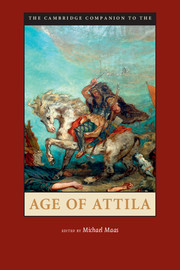
The Cambridge Companion to the Age of Attila
-
- Published online:
- 05 October 2014
- Print publication:
- 29 September 2014

Jerusalem
- The Topography, Economics and History from the Earliest Times to AD 70
-
- Published online:
- 05 October 2014
- Print publication:
- 31 October 2013
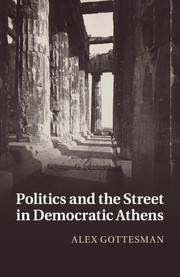
Politics and the Street in Democratic Athens
-
- Published online:
- 05 October 2014
- Print publication:
- 02 October 2014
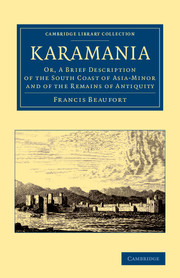
Karamania
- Or, A Brief Description of the South Coast of Asia-Minor and of the Remains of Antiquity
-
- Published online:
- 05 October 2014
- Print publication:
- 02 January 2014
Contents
-
- Book:
- Politics and the Street in Democratic Athens
- Published online:
- 05 October 2014
- Print publication:
- 02 October 2014, pp v-vi
-
- Chapter
- Export citation
3 - Cultureclash?
-
- Book:
- Historical Agency and the ‘Great Man' in Classical Greece
- Published online:
- 05 October 2014
- Print publication:
- 02 October 2014, pp 57-103
-
- Chapter
- Export citation
